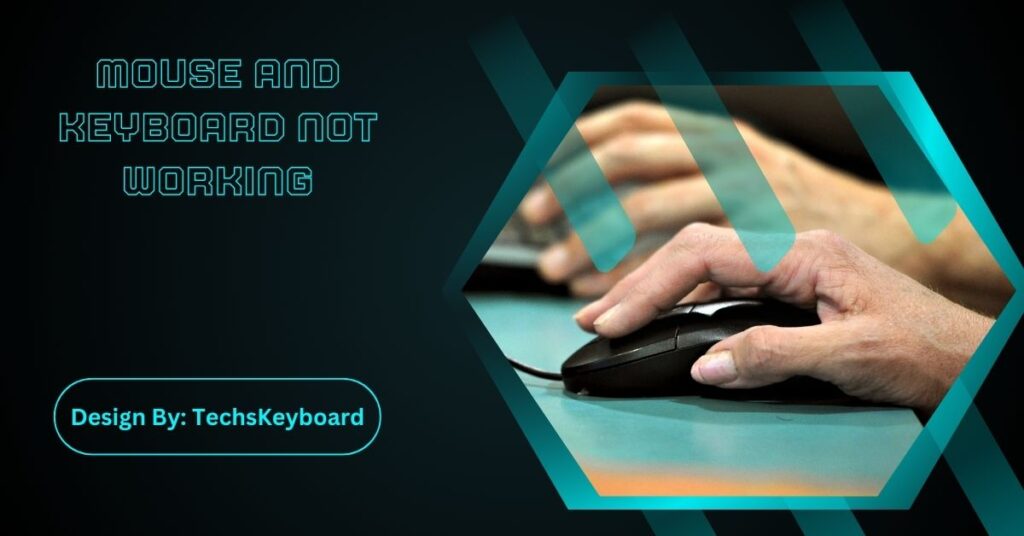Is Mouse and keyboard not working? Check connections, update drivers, restart your system, replace batteries, and scan for malware. Maintain devices with regular cleaning, timely updates, and proper settings.
A malfunctioning mouse and keyboard can be frustrating and downright disruptive, whether you’re trying to finish a work assignment or enjoy your favorite game. These essential input devices are the lifeline of your computer system, and when they don’t work, it can feel impossible to get anything done.
Fear not! This guide will walk you through the possible reasons why your mouse and keyboard might stop working, how to troubleshoot the issue, and tips to prevent it from happening again.
Why Aren’t My Mouse and Keyboard Working?
Before jumping into solutions, it’s helpful to identify the root cause of the problem. Common reasons for unresponsive mice and keyboards fall into two categories—hardware and software issues.
Hardware-Related Causes
- Disconnected or Loose Connections: For wired devices, a loose or disconnected USB port is a common culprit.
- Dead Batteries (For Wireless Devices): Batteries losing charge can interrupt communication between wireless devices and the computer.
- Physical Damage: Worn-out cables or internal component damage from drops can lead to malfunction.
- Interference (For Wireless Devices): Signals from other wireless devices or physical objects can block communication.
Software-Related Causes
- Outdated or Corrupted Drivers: If drivers aren’t updated or become corrupted, input devices may stop working.
- System Glitches or Conflicts: Operating system updates or software conflicts can affect drivers and input devices.
- Virus or Malware Attacks: Malicious software may interfere with device functionality.
- Power Settings: Power options in your system may unintentionally turn off USB ports to conserve energy.
Troubleshooting Steps for Mouse and Keyboard Malfunctions:

Step 1 – Check Hardware Connections
- Ensure all cables are connected securely.
- For wired devices, try plugging the mouse or keyboard into a different USB port.
- Test your device on another computer to determine whether the issue is with the device or your system.
Step 2 – Test Wireless Connections
- Replace the batteries in your wireless mouse or keyboard.
- Move your wireless receiver closer to the devices to eliminate signal interference.
- Follow the manufacturer’s instructions to re-pair the devices if necessary.
Step 3 – Restart Your Computer
Sometimes, a simple restart can resolve temporary system glitches.
Step 4 – Update or Reinstall Drivers
- Search for your “Device Manager” on Windows and locate the mouse and keyboard drivers.
- Right-click on the driver and choose Update Driver.
- If updating doesn’t work, uninstall the driver and restart your computer. Your system will reinstall a fresh driver automatically.
Step 5 – Run a Virus Scan
Use a reputable antivirus program to detect and remove potential malware affecting your input devices.
Step 6 – Check USB Power Settings
- Go to “Power Options” in your operating system settings.
- Disable any features set to turn off USB devices to save power.
Step 7 – Perform System Diagnostics
If all else fails, consult your system’s diagnostic tools or reach out to an IT specialist.
Preventing Future Mouse and Keyboard Problems:
Keeping your input devices in good working order is easier than you might think. Here are some proactive tips to ensure long-term functionality.
- Clean Devices Regularly: Dust accumulation can affect the sensitivity of a mouse or keyboard. Use a microfiber cloth and compressed air to clean.
- Replace Cables or Batteries on Time: Don’t wait until your device stops working! Replace cables or batteries when they show signs of wear or lose charge quickly.
- Avoid Signal Interference: To maintain a strong wireless connection, avoid placing devices near TVs, microwaves, or other wireless gadgets.
- Update Drivers Periodically: Regularly updating your drivers ensures compatibility with the latest software and system updates.
- Use High-Quality Peripherals: Investing in durable, trusted brands reduces the likelihood of breakdowns.
Also Read: Is Palworld Better With Controller Or Keyboard – Complete Guide!
Real-Life Solutions to Common Input Problems:
- Case 1: A user’s wireless mouse stopped moving the cursor. It turned out the receiver was blocked by a stack of books on the desk. Once the receiver was in a direct line of sight, the problem was solved instantly.
- Case 2: Another user experienced an unresponsive keyboard after a system update. Rolling back the update fixed the issue until the manufacturer delivered a new, compatible driver.
- Case 3: A gamer noticed their mouse lagging in the middle of an intense session. After replacing the worn-out mousepad and cleaning the mouse sensor, performance improved dramatically.
These examples highlight how simple fixes can resolve everyday input problems.
Frequently Asked Questions:
Got questions about troubleshooting input devices? We’ve got answers! Check out these commonly asked questions to help you tackle any issues you may encounter:
1. Why is my keyboard typing the wrong characters?
This issue could be due to an incorrect keyboard layout setting. Make sure your keyboard layout is set to the correct language in your computer’s settings.
2. How can I fix a sticky keyboard key?
If a key on your keyboard is sticking, try gently removing the keycap and cleaning underneath it. Be careful not to use excessive force to avoid damaging the key or the keyboard.
3. Why is my mouse cursor moving erratically?
An erratic mouse cursor can be caused by several factors, such as a dirty mouse sensor or interference from other wireless devices. Clean the mouse sensor and ensure there are no obstacles or wireless devices in close proximity that may interfere with the signal.
4. How can I resolve connectivity issues with my wireless devices?
If you’re experiencing connectivity issues with wireless input devices, try resetting the connection by re-pairing the device with its receiver or restarting the computer. Additionally, make sure there are no obstacles blocking the wireless signal between the device and the receiver.
5. What should I do if my touchpad is not working?
If your touchpad is unresponsive, ensure it is not disabled. Most laptops have a function key that can enable or disable the touchpad. Press the corresponding key combination to enable the touchpad.
Conclusion:
In conclusion, troubleshooting common issues with input devices can greatly improve your overall computing experience. By taking simple steps like cleaning your mouse sensor, ensuring proper wireless connectivity, and checking touchpad settings, you can quickly resolve many common problems. Remember to approach the troubleshooting process with patience and a systematic approach. With these tips in mind, you’ll be back to smooth and efficient computing in no time.


